What’s it Like Being a NAC Summer Intern? I Shadowed 5 Intern Projects To Find Out.
By Natural Areas Conservancy on August 28, 2024
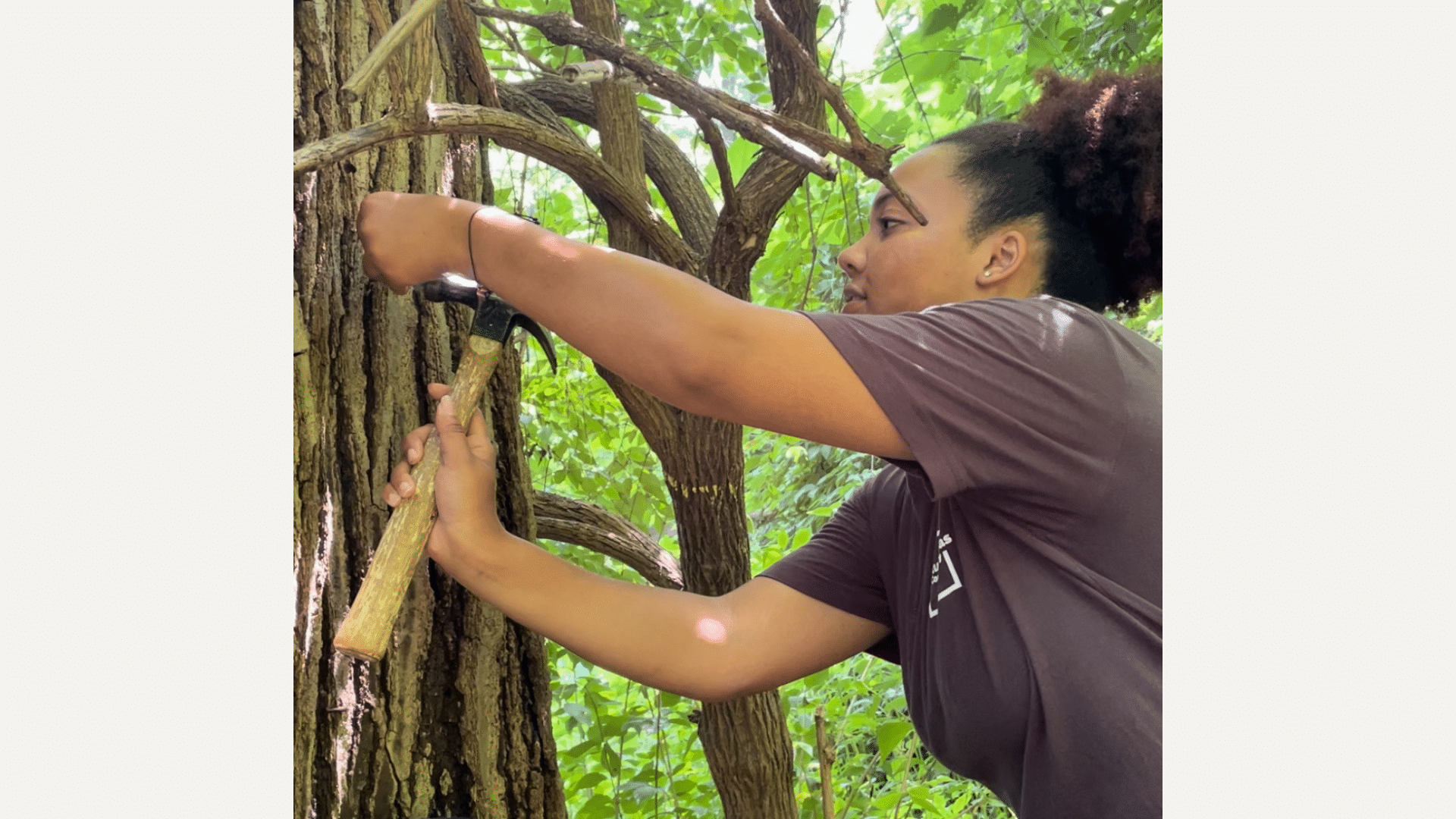
By Natural Areas Conservancy on August 28, 2024

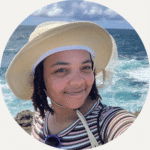 By Valeria Ortiz, Content Marketing Intern
By Valeria Ortiz, Content Marketing InternHey there! I’m Valeria, and this summer, I had the exciting opportunity to join the NAC as a content marketing intern, a brand-new internship within the Communications and External Affairs team. During my time at the organization, my role was to share stories from the various projects interns were involved in, and ultimately promote the NAC’s mission of championing urban forests and wetlands, connecting people to nature, and supporting the environmental workforce.
I applied for this internship because I believe NYC’s urban natural areas are hidden gems that, if more widely known, could provide great benefits and enjoyment to residents and visitors alike. I want to take you through my journey exploring NYC’s natural areas and the various intern conservation projects I was able to join and work on. Most importantly, I’ll share all the valuable lessons I learned about natural areas, why they are essential to our city, and why the work the NAC is doing is impactful and important.
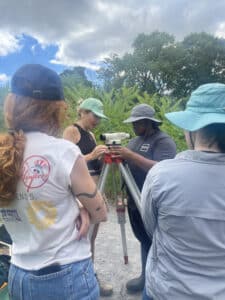
The NNBF intern crew measures the elevation of a shoreline on Randall’s Island
The goal of the Natural and Nature-Based Features (NNBF) project is to determine if natural and nature-based solutions are performing as well as, if not better than, traditional methods of shoreline armoring, in terms of ecological function, hazard mitigation, and structural integrity. Some examples of the nature-based solutions being tested are:
Essentially, the interns helped to measure the resilience of NYC shorelines by collecting data that will help practitioners determine if these nature-based approaches are a good choice. This project took me to Randall’s Island, the first of many parks I had never visited before this internship. Despite the particularly hot weather and limited shade, the park was filled with fascinating plants. I even spotted some icky spotted lantern flies, which are unfortunately pests that seem to be everywhere in the city. My favorite plant was the staghorn sumac, a fuzzy plant that almost feels furry.
One of the most memorable aspects of this project was seeing the NNBF team in action as they surveyed random park goers about the project. This experience taught me the importance of community engagement, as involving local residents not only helps gather valuable feedback but also ensures that conservation is understood and supported by the community.
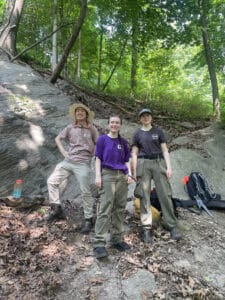
Members of the seasonal forest assessment crew
The Ecological Assessment (EA) project was one of the most exciting parts of my internship. The NAC, together with NYC Parks, is conducting a second Ecological Assessment to update data on the health and growth of NYC’s forests, freshwater wetlands, and salt marshes, which was first collected in 2014. On the day I participated, I worked with the forest assessment crew near my neighborhood in Inwood Hill Park and Highbridge Park in Upper Manhattan.
During the forest assessment, we set up transect lines to define plots and, within each plot, estimated percent cover, noted plant species, and measured the diameter at breast height (DBH) of trees. We also assessed the health of the understory, midstory, and overstory, and tagged trees to track their health and growth over time. Understanding the health of these forests is crucial because they support biodiversity, provide habitats for wildlife, and offer valuable recreational spaces for the community.
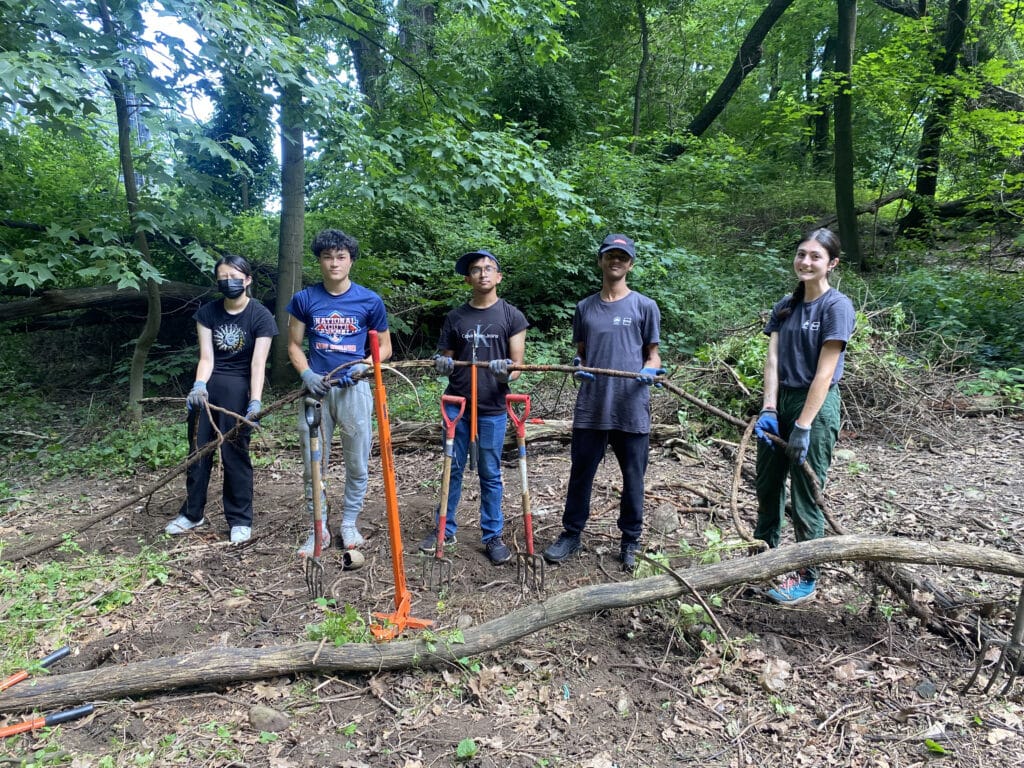
Interns from our High School Student Urban Nature Program in Forest Park
The high school internship program was launched last year in Forest Park and was expanded this year to Staten Island. The purpose of this program is to introduce high school students from all over NYC to urban conservation work and begin to teach them technical skills needed to succeed in green jobs. I joined the group on their first week when they were learning about plant identification. I was genuinely impressed with how quickly the high school interns caught on.
For me, the main takeaway from this experience was the importance of teaching younger generations about the environment. By involving them early, we can create a lifelong appreciation for nature and potentially inspire future careers in environmental fields.
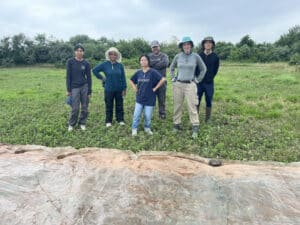
NAC interns prepping a field for a seed nursery at Floyd Bennett Field
The Jamaica Bay Seed Increase and Restoration project at Floyd Bennett Field aims to produce native seeds for restoration projects around NYC, especially following the environmental damage from Hurricane Sandy. I visited this site during a collaboration with the Jamaica Bay-Rockaway Parks Conservancy (JBRPC) Wetland Fellows. We worked together on weeding existing nurseries and prepping a field to become a seed increase nursery using black and clear tarps.
This project gave me a deeper understanding of the hard work and precision required to grow plants. I learned that plants can be incredibly sensitive, and it’s challenging to know exactly what they need to thrive. Visiting this field work site taught me about the challenges of conservation efforts and showed me the importance of gardeners like those from JBRPC, who do difficult physical labor and care for sensitive plants to maintain our green spaces and care for NYC’s different ecosystems.
The North 40 Trails Project was a new experience for me. This initiative, part of the Citywide Trails Program, assesses the health of the trails at Floyd Bennett Field by identifying invasive species, areas of erosion, and overall trail conditions. With this data, the team can then make recommendations to the National Parks Service (NPS) for the best way to manage the trails long term.
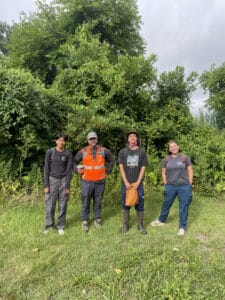
The North 40 trails mapping crew at Floyd Bennet Field
One of the highlights was stumbling upon a petting zoo and getting to pet some friendly cows—definitely the best part of the day! During our work, we pulled a lot of mugwort and other invasive species. I realized how overrun the area was with invasives, which were choking out native plants like sumac. Using GPS mapping equipment, we navigated trails, identified plants, and collected data that will help restore these natural spaces.
These projects have taught me so much about urban conservation. Working hands-on in the field and with passionate professionals, I now understand the balance needed to keep our green spaces thriving. Through this internship, I’ve grown a lot—learning plant ID, social media management, and the importance of community involvement.
Each project showed why these green spaces matter and showed me the crucial role they play in keeping our city healthy. This journey through NYC’s natural areas has inspired me to keep advocating for and participating in conservation projects. I encourage everyone to explore and support our urban natural areas. Together, we can help keep NYC’s environment vibrant and thriving for the future. Staying engaged in these efforts is essential for preserving these beautiful spaces and ensuring they continue to benefit everyone.
Learn more about the NAC’s internships.
New here? Subscribe to our newsletter for updates on internships, events, and the NAC’s research.